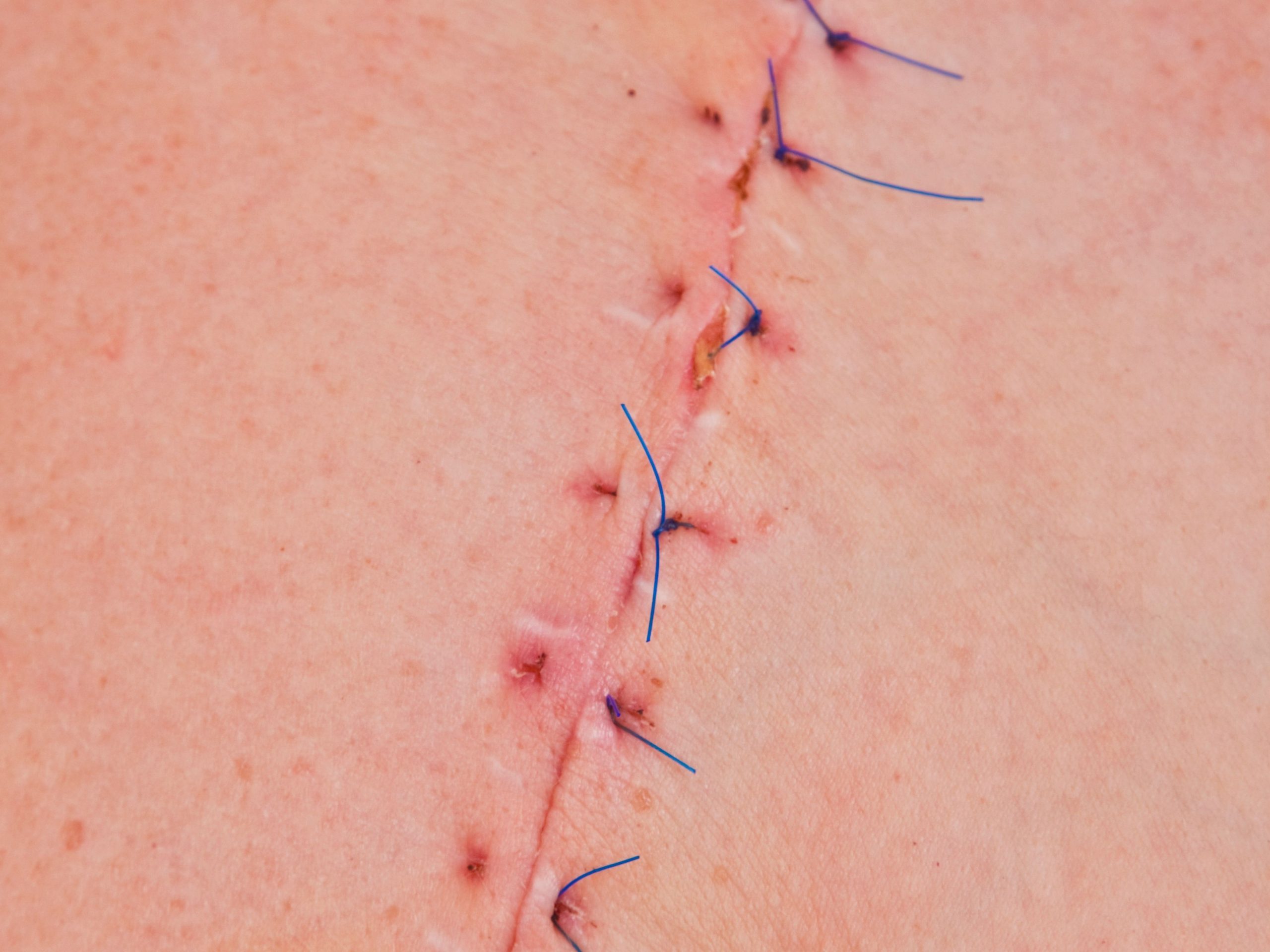What is scar tissue?
Scar tissue is a dense, fibrous tissue. It is usually quite hard and forms in the area of damage to the normal tissue. Damage can be caused by cuts, bruises, incisions, injury or disease and it can vary in size and depth.
How does the scar tissue form after the cosmetic surgery?
The process of the formation of the scar tissue after a cosmetic surgery is the same as after any other surgery or injury. After a cosmetic surgery, the scar forms in the areas of incisions due to the damage caused. Scar tissue can form superficially as well as deep under the surface of the cut. There are 4 main scar formation stages which are homeostasis, clotting, growth and proliferation and strengthening. Here we will focus on proliferation and strengthening.
- Proliferation: is the stage where new collagen is being laid by the body in the area of an incision forming the actual scar.
- Strengthening: Is the stage where healing continues after the proliferation. This is where the area of incision might look slightly red and be itchy. The scar might appear to be fully formed on the surface, however, more healing is occurring deeper, under the skin.
Moreover, it is important to note that some areas might develop hypertrophic (bigger and raised) scars after cosmetic surgery which are known as keloids. Keloids can form anywhere in the body, however, ear lobes, face and chest areas are most prevalent for keloid formation.
What can help to manage the scar tissue after the cosmetic surgery?
There are many different approaches that are being used to manage the scar tissue build up after a cosmetic surgery. However, the treatment that stands out and is often recommended by surgeons is manual lymphatic drainage. Manual lymphatic drainage helps to prevent fibrosis (which is the scar tissue formation), as well as manage post-surgical swelling and helps with contouring/shaping of the area operated. In addition to the manual lymphatic drainage, exercise therapy is also an effective way of managing the scar tissue. However, we strongly recommend consulting your surgeon to ensure that exercise therapy is appropriate and know when you can start it. Once given all clear by your surgeon, you should see an exercise specialist to ensure that exercises prescribed are suitable for you and the area operated on.
Can nutrition influence scar tissue healing after a cosmetic surgery?
Short answer is yes, it can. Your diet can either help with the scar tissue formation or have an adverse effect on it. For example, it is advised to have a balanced diet containing carbohydrates, fats and proteins as all of these macronutrients are playing a vital role in wound healing and scar tissue formation. Lack of any of these nutrients can result in longer scar tissue formation time and impair the strength of the scar. Moreover, staying well hydrated by drinking plenty of water helps to keep the skin moist, hence, having a direct, positive impact on scar tissue formation and wound healing.
Also, it has been observed that smoking and alcohol use has a detrimental effect on wound healing and scar tissue formation, hence, we would recommend to stop smoking and consuming alcohol before and during your operation or at least to reduce the tobacco and alcohol intake to a minimum.
Scar tissue management while having an underlying health condition:
All of the information provided above is for the general population who does not have long term health conditions. But for example people with high blood pressure, high cholesterol and diabetes can and are having cosmetic surgeries too. However, this population should be aware that usually they need an extensive examination before the operation and that their condition has an impact on scar tissue formation and wound healing. For example, diabetes makes collagen more viscous which can result in the scar forming longer and being physically harder. Hence, we would recommend consulting your GP for individualised advice before making a decision to have a cosmetic operation.
What will happen if I ignore the scar tissue after cosmetic surgery?
If scar tissue is left untreated, it may take much longer for it to recover and in some cases, it might never look completely healed. Also, in case of deep scar formation, the scar might affect the physical function of the area as scar is not very flexible, hence, it might alter the range of movement of the particular area as well as cause pain.
We hope this information is useful for you. If you need advice or have any questions about our treatments, please contact us. You can find us in Mil Hill Broadway and Islington. We are always happy to help. If you like this blog, please share!
References:
https://www.ncbi.nlm.nih.gov/pmc/articles/PMC3840475/pdf/wound.2011.0321.pdf
https://www.liebertpub.com/doi/pdf/10.1089/acm.2020.0109
https://www.ncbi.nlm.nih.gov/pmc/articles/PMC4961501/pdf/10-1055-s-0036-1584824.pdf
https://www.ophed.com/system/files/2015/07/NutritionandWoundHealing.pdf



